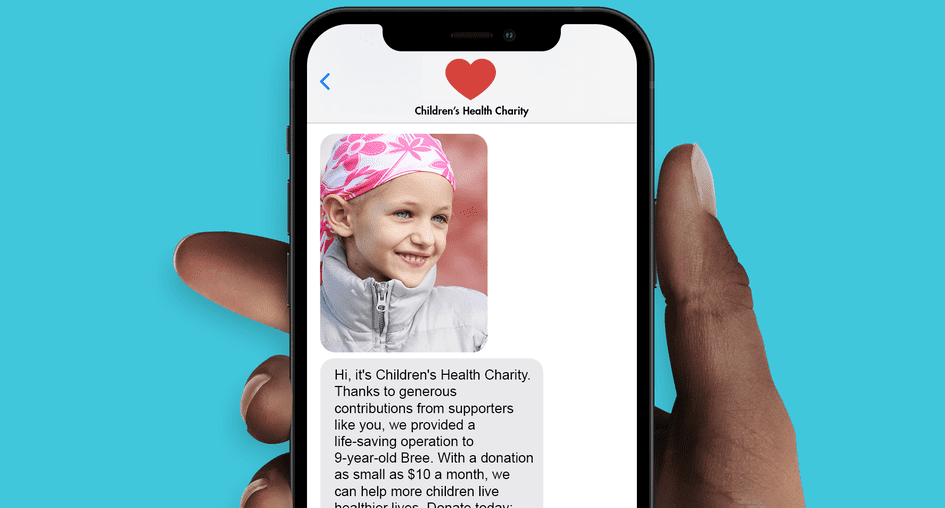For years, email has been the cornerstone of digital communication in the nonprofit sector. It’s familiar, inexpensive, and measurable. But in a world of cluttered inboxes and declining open rates, many nonprofits are turning to a more immediate and effective channel: SMS marketing for non profits.
Text messaging isn’t just for reminders or two-factor authentication anymore. It’s a high-response, low-friction communication method that puts nonprofits directly in front of their supporters—with open rates exceeding 90% and most messages read within three minutes. For organizations seeking higher engagement, quicker donations, and better event turnout, SMS isn’t just an add-on. It’s a core strategy.
The Case for SMS in Nonprofit Marketing
1. Immediacy Drives Action
Email campaigns typically compete for attention in a crowded inbox. With SMS, the message cuts through that noise. When a supporter hears their phone buzz, chances are they’ll check the message right away. That immediacy makes SMS especially powerful for:
-
Last-minute fundraising pushes
-
Urgent advocacy calls
-
Volunteer coordination
-
Event reminders and updates
In these cases, timing matters. And nothing beats the speed of a well-timed text.
2. Unmatched Engagement Metrics
Consider this:
-
The average open rate for emails hovers around 20–25%.
-
SMS? Over 90%.
-
Average click-through rate (CTR) for emails: ~2.5%.
-
CTR for SMS: between 15–40%, depending on the offer.
Nonprofits that incorporate texting into their communication stack often see dramatic jumps in engagement compared to email alone. This isn’t because email is dead—but because SMS is alive in the way people live: mobile-first, notification-based, and on-demand.
3. Mobile Giving Made Frictionless
Incorporating SMS into fundraising campaigns removes unnecessary steps between a supporter’s intent and their action. With platforms like Give Lively, Rally Corp, and Twilio, nonprofits can set up shortcodes or branded links that allow supporters to donate with just a few taps.
An example in action:
“Support clean water access today—text GIVE to 80123 to donate $10.”
That kind of simplicity lowers the barrier to giving, especially during emotional or time-sensitive moments.
Common Use Cases for SMS in Nonprofits
1. Fundraising Drives
One of the most popular uses of SMS in nonprofit marketing is real-time fundraising. Whether it’s a Giving Tuesday campaign or a disaster relief effort, SMS can rally donors at the moment they’re most likely to act.
Tips:
-
Send reminders throughout the day with donation updates (“We’re 82% to our goal!”).
-
Use urgency-based language sparingly but effectively (“Only 3 hours left to make an impact!”).
-
Include mobile-optimized donation links or reply options (“Reply YES to give $10”).
2. Event Promotion and RSVP Management
Email invitations often go unopened. But a short text like “We saved you a spot for Saturday’s gala! Tap here to confirm: [link]” feels more personal and timely.
SMS also shines for event-day logistics. Nonprofits use it to:
-
Confirm attendance
-
Share location details
-
Send schedule updates
-
Follow up post-event with thank-yous or surveys
3. Donor Retention and Stewardship
Nonprofits are beginning to use texting not just for transactional messaging, but relationship-building. These messages might look like:
-
“Hi Amy—just wanted to say thank you again for your support. Here’s where your donation made an impact: [link].”
-
“Hey Marcus, we thought of you when we saw this story from our project in Kenya: [link].”
These personal touches build trust and increase the likelihood of recurring support.
Compliance and Trust: What Nonprofits Need to Know
With great reach comes great responsibility. SMS is regulated under the Telephone Consumer Protection Act (TCPA) in the U.S., and nonprofits are still required to follow opt-in and opt-out rules—even if they’re not selling anything.
Best practices:
-
Always collect explicit consent to text. A checkbox that says “Yes, text me updates” is a must.
-
Include an opt-out message in your first text (“Reply STOP to unsubscribe”).
-
Avoid sending messages outside business hours.
-
Don’t over-message—2–4 per month is a good starting range unless there’s active engagement.
Being transparent about what supporters can expect—and delivering on that promise—builds trust and minimizes unsubscribes.
How to Integrate SMS Into Your Nonprofit Strategy
1. Start with a Goal
Don’t send texts just to send them. Define your objective:
-
Raise X dollars
-
Get Y attendees to an event
-
Increase Z volunteers this month
Each campaign should be outcome-driven and tracked.
2. Build a Quality List
Use website forms, event registrations, and donation pages to collect mobile numbers with consent. The quality of your list is far more important than its size.
3. Choose the Right Platform
Look for SMS tools that:
-
Integrate with your CRM
-
Support automation and scheduling
-
Provide delivery and engagement analytics
Good options include:
-
Rally Corp (nonprofit-specific)
-
Twilio (developer-friendly)
-
SimpleTexting (user-friendly)
-
ClickSend (global-friendly)
4. Segment and Personalize
As with email, segmentation is key. Tailor messages based on:
-
Donation history
-
Event participation
-
Interests or preferences
A supporter who donates monthly may appreciate a behind-the-scenes update more than a repeated donation request.
5. Test, Track, Improve
A/B test your messages:
-
Short vs. long
-
With vs. without emojis
-
Different CTAs
Track performance by message type, time sent, and audience segment. Use the insights to improve future campaigns.
Real Example: A Small Nonprofit, Big Results
One small food bank in Texas implemented an SMS strategy during their end-of-year campaign. With a list of just under 2,000 opted-in supporters, they sent three texts over 48 hours leading up to the deadline.
The results:
-
42% click-through rate
-
$18,000 in donations from text alone
-
Average gift size 22% higher than email average
They spent less than $150 on the SMS campaign.
Final Takeaways
-
SMS is no longer optional for nonprofits who want to reach people where they actually are—on their phones.
-
Engagement is immediate, direct, and measurable—and when used wisely, text messaging builds stronger supporter relationships, not just quick donations.
-
Compliance and consent matter, but once in place, the door is open to powerful new forms of connection.
If your nonprofit is still relying on email alone, it might be time to add SMS into your communication stack. It’s not about replacing email—it’s about meeting your supporters where they’re most likely to respond. And right now, that’s in their text inbox.



